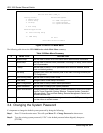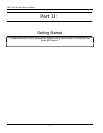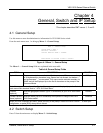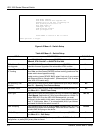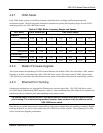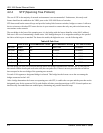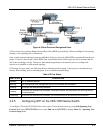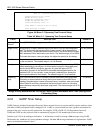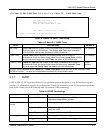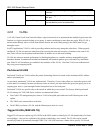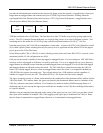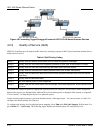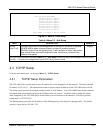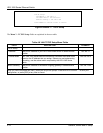
VES-1000 Series Ethernet Switch
General, Switch and IP Setup 4-5
Figure 4-3 Root Ports and Designated Ports
STP-aware devices exchange Bridge Protocol Data Units (BPDUs) periodically. When the bridged LAN topology
changes, a new spanning tree is constructed.
Once a stable network topology has been established, all devices listen for Hello BPDUs transmitted from the root
bridge. If a device does not get a Hello BPDU after a predefined interval (Max Age), the device assumes that the
link to the root bridge is down. This device then initiates negotiations with other devices to reconfigure the
network to re-establish a valid network topology.
STP assigns five port states (see following table) to eliminate packet looping. A device port is not allowed to go
directly from blocking state to forwarding state so as to eliminate transient loops.
Table 4-E Port States
PORT STATE DESCRIPTION
Disabled STP is disabled (default).
Blocking Only configuration and management BPDUs are received and processed.
Listening All BPDUs are received and processed.
Learning
All BPDUs are received and processed. Information frames are submitted to the learning process
but not forwarded.
Forwarding All BPDUs are received and processed. All information frames are received and forwarded.
4.2.5 Configuring STP on the VES-1000 Series Switch
To configure STP on the VES-1000 Series switch, select 2 from the main menu, go to the Edit Spanning Tree
Protocol field, press [SPACE BAR] once to select Yes and then [ENTER] to display Menu 2.1 - Spanning Tree
Protocol Setup menu.




